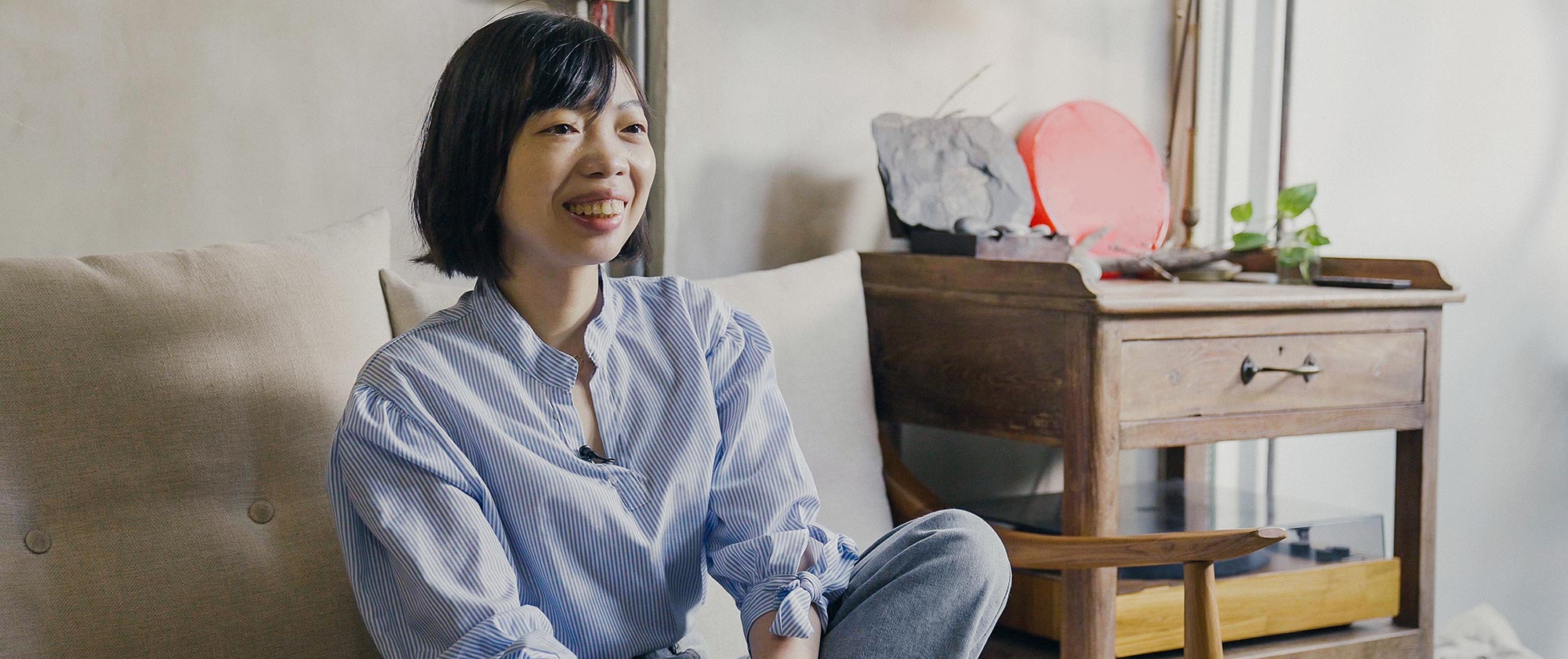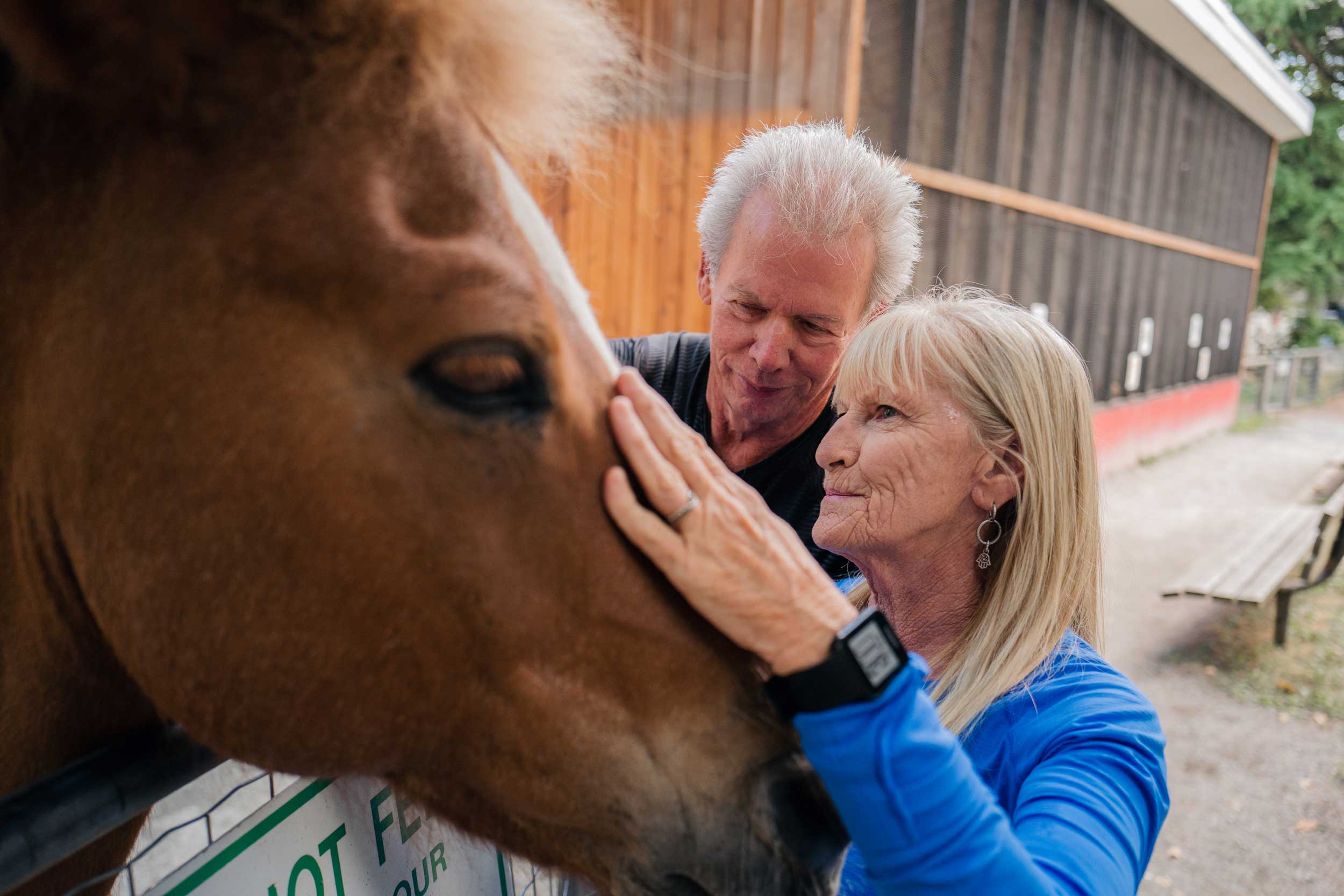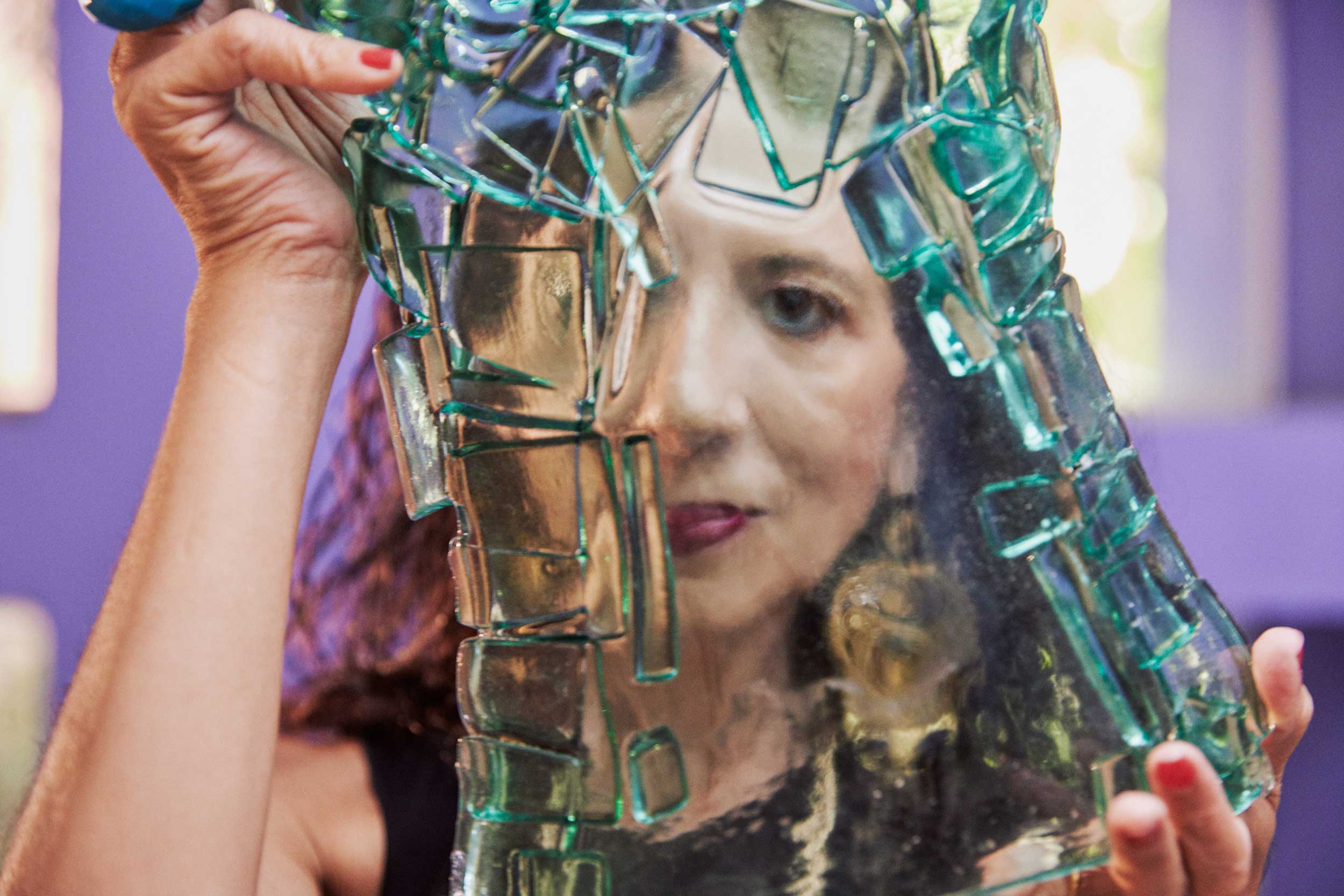'I have hope because science is advancing'
For Tina, being a patient and being patient go hand in hand; she’s had to be both all her life.
The memory of her diagnosis isn’t her own reflection, but a story recounted by her parents of that pivotal day, on a train to Taipei when Tina was just four months old. She looked pale, and her lips had turned purple. Her parents brought her straight to the hospital and soon learned that Tina had beta thalassemia, a rare, inherited blood disorder that can lead to fewer and less healthy red blood cells being produced in the body.
It turned out that Tina’s siblings, her parents and grandparents were genetic carriers of the disorder but didn’t experience symptoms. Tina’s case, however, was severe.
“My parents were told that I might not live to 19 years old,” she said.
Tina would require regular blood transfusions, as well as injections to help manage the iron overload in her body.
Baby Tina is held in her mother’s lap. After Tina’s diagnosis, the rest of her family was tested for the blood disorder, and while her siblings, parents and grandparents all carried the gene mutation, only Tina experienced symptoms.
To tell or not to tell
When Tina entered kindergarten, her parents decided not to tell the teacher about her condition, which made her easily fatigued and gave her what she called a “pregnancy belly.” Beta thalassemia can cause abdominal swelling from an enlarged spleen, because the organ is working harder than normal to rid the body of abnormal red blood cells.
“I was kind of an outsider in a group of young kids with my big tummy,” she said. “Nobody knew I was sick, and because of my lack of strength, the teacher thought I was being lazy.”
She was eventually transferred to a different school, and her parents sought to avoid these kinds of misunderstandings – they wanted a positive learning environment for their daughter. From elementary school onward, Tina made the choice to tell her teachers and classmates about her blood disorder.
“They protected me,” she said. “For instance, when I wanted to go to the restroom, a classmate would always come with me. I felt very lucky.”
Young Tina, showing abdominal swelling, stands with her siblings. “My mom and dad had to bring me to the hospital for regular visits and treatment – they always gave me more attention,” Tina said, reflecting on the challenges for her family.
But sharing with others about her condition is still a decision Tina doesn’t take lightly. At university, she studied to become a preschool teacher; and when it came time to interview for jobs, she chose to be transparent about living with beta thalassemia – only to be hit with rejections.
Subscribe to Our stories alerts
Beyond just relevant information about Bristol Myers Squibb's therapeutic areas and innovation, Our stories offer a window into the work our employees do every day for patients.
What to know about beta thalassemia:
- There are two main types of thalassemias: alpha and beta.
- Beta thalassemia is characterized by low levels of hemoglobin, a protein that resides in red blood cells and carries oxygen throughout the body.
- Roughly 1 in 100,000 people globally are diagnosed with symptomatic beta thalassemia each year.
- Beta thalassemia has been found to occur most frequently in people from Mediterranean countries, the Middle East, and Central and Southeast Asia.
- Beta thalassemia affects men and women equally.
“Once they hear about my illness, they have presumptions that I may not have the physical strength to perform my work,” she explained, “or I may need to keep taking days off for hospital visits.”
More freedom, more time
Advances in medicine have helped Tina to defy these presumptions.
From daily subcutaneous injections to intravenous (IV) injections two to three times weekly, Tina’s treatments slowly but steadily streamlined. Eventually, she would do away with iron chelator injections entirely, in favor of oral medication. Now she takes just one tablet per day.
“Since university, when I started taking oral medication, I’ve had more time to go out with my friends,” she explained. “I don't have to rush home to do my injections anymore. Sometimes I can even spend one or two nights away with my friends.”
Over the years, her blood transfusions were extended to once every two weeks, then every three weeks. This impressive progress has made traveling a reality for Tina, who patiently waited to put her planning skills into practice.
“I’m a very good trip planner,” she said. “I’m usually the one to plan the details; I become the tour guide.”
Her favorite destination so far?
“Our family visited Okinawa in 2017, and it was really an unforgettable vacation.”
It was the first time the entire family traveled abroad together: Tina, her parents, sister and two brothers. They rented a car, driving themselves across the island equipped with an itinerary that she put together. Another first: they went snorkeling and diving, surrounded by caves and coral reefs more than 10,000 years old.
“The beauty was beyond words,” Tina said.
Tina poses with her family while on vacation in Okinawa, the first time that the four siblings brought their parents abroad. “My mom and dad enjoy watching travel shows about Japan, so this trip was making their dream of going there come true.”
“I’m really thankful to the scientists who make this happen,” she said. “They allow me to lead a normal – a somewhat normal – life, nowadays.”
That caveat, that “somewhat,” is the work that’s yet to be done. One reason Tina hasn’t traveled outside of Asia, for example, is because her family feels more at ease if she is closer to home.
Raising her hand for clinical research
In early 2017, a research nurse at the National Taiwan University Hospital asked Tina if she would consider participating in a clinical trial for a medicine used to treat anemia in beta thalassemia.
“I told her yes because it's not just for me, it should also be for future peer patients,” she said. “If it’s successful here in Taiwan, it could be so much better for the people who are coming after me.”
Tina, now 37, continues to wait patiently, taking part in clinical research and watching for new treatment options that could bring further meaningful change for her and others with beta thalassemia.
That patience is rooted in hope.
“I have hope because science is advancing,” she said. “As long as you are alive, there is hope in life.”
Bristol Myers Squibb (BMS) is a longstanding leader in the field of hematology. As part of its efforts, BMS developed the world’s first erythroid maturation agent, helping red blood cells to develop properly and addressing anemia and transfusion burdens associated with conditions such as thalassemias, myelodysplastic syndromes and myelofibrosis. BMS remains committed to developing more options for patients whose diseases are impacted by anemia, including research into thalassemias.
About Bristol Myers Squibb
Bristol Myers Squibb is a global biopharmaceutical company whose mission is to discover, develop and deliver innovative medicines that help patients prevail over serious diseases. As global citizens, we work sustainably and responsibly to create a positive impact in the communities where we live and work.



